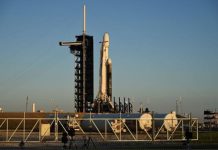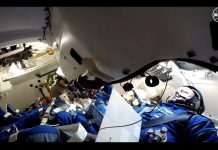
CAPE CANAVERAL, Fla., Sept. 8 (UPI) — NASA launched its Security-Regolith Explorer spacecraft, the OSIRIS-REx, aboard a United Launch Alliance Atlas V rocket on Thursday evening from Cape Canaveral.
The rocket and spacecraft blasted off on time, at exactly 7:05 p.m. EDT, from Space Launch Complex 41 at the Florida Air Force Station.
OSIRIS-REx is set to be the first NASA spacecraft to retrieve an asteroid sample and return it to Earth. Once in space, the spacecraft will set its sights on 101955 Bennu, a 1,614-foot-wide space rock in the collection of near-Earth asteroids known as the Apollo group.
Though OSIRIS-REx has many exciting milestones ahead, its next two years will be spent traveling. The craft won’t rendezvous with the asteroid until 2018. Once it meets up with the rock, the craft will spend 505 days mapping its surface while in orbit at an altitude of roughly 3.5 miles.
NASA scientists chose 101955 Bennu for the OSIRIS-REx mission because of its unique supply of unadulterated carbonaceous material, one of the building blocks of life. Researchers believe asteroid collisions may have provided early Earth with the biochemicals necessary for life.
The mission may also yield new clues on how future asteroids could impact Earth, scientists said.
After nearly two years in orbit around 101955 Bennu, OSIRIS-REx will attempt an extremely close approach without landing, using its robotic arm to scoop up a material sample from the asteroid’s surface.
The spacecraft will begin its return journey to Earth in 2021 and is scheduled to touch down on September 24, 2023.





